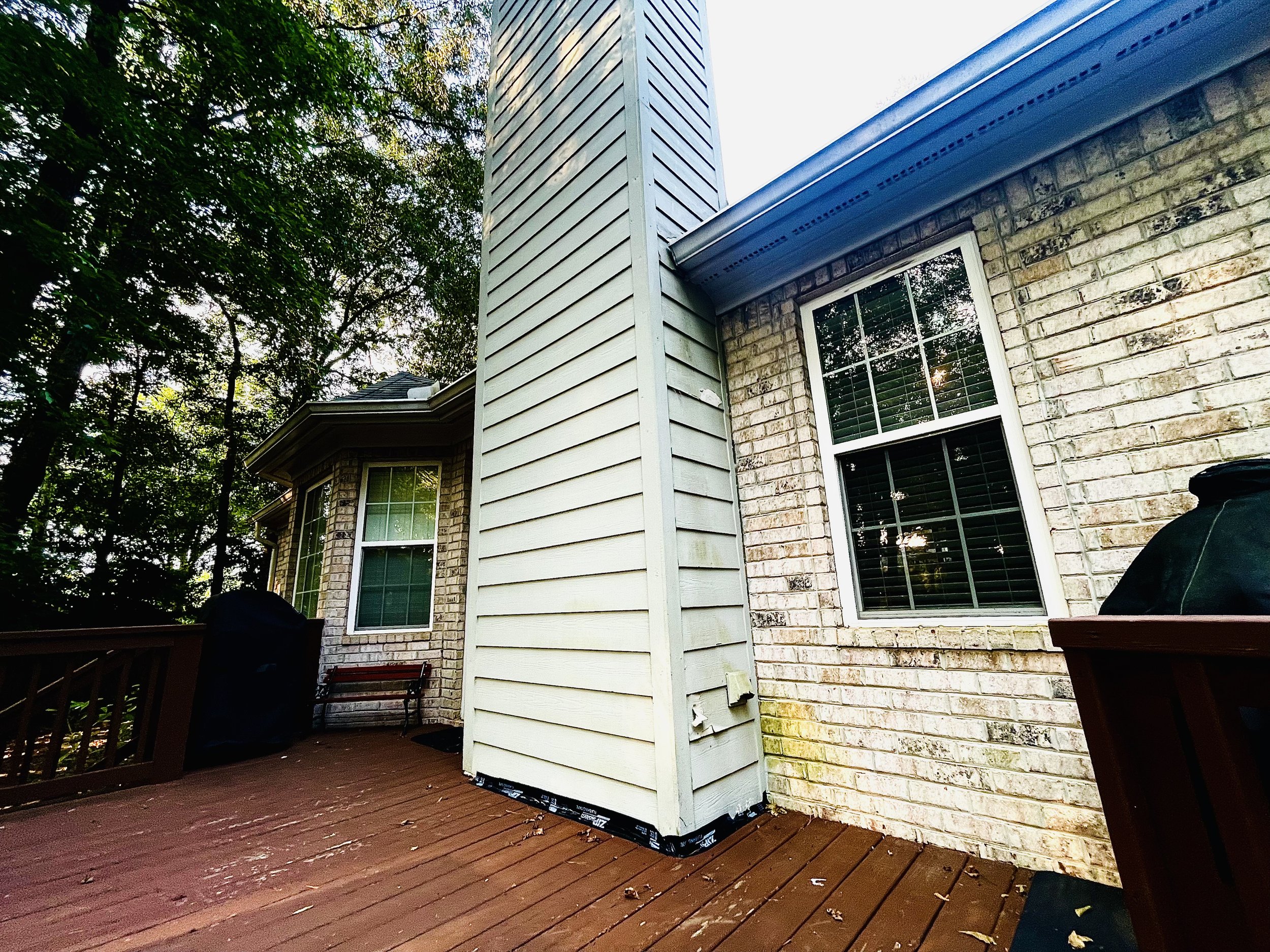When Chimneys Go Bad - Chimney Repair Project Part 1
I did not choose to repair chimneys, chimneys chose me.
Last year a unique chimney repair found its way to me. It was a small repair. A three day siding repair, turned into a two week sweat-a-thon. From there, one chimney followed by another landed on my project list. All slightly different, but presenting similar symptoms.
Over the next couple weeks, I will be breaking down what I have discovered, the issues and solutions discovered, and other details regarding a recent chimney repair over multiple post.
The fiber-cement siding is deteriorating along the roofline. The cause is not allowing enough space for water to flow beneath.
Because the siding is a cement material, it does not absorb water well. Enough water will cause the material to separate in layers.
Without kick flashing, a strong enough amount of water will find its way past the gutter. If the caulking and painting is not maintained, along with no weather resistant barrier, it is a matter of time before the water finds its way to the structure.
You can see the water damage here.
The wood above the roofline is unaffected, where the studs within the roofline are water stained.
Let’s start from the beginning.
When the client originally asked me to take on this project, it was to replace a few spots of lap siding. Some of the fiber-cement siding had blistering and peeling paint, along with deterioration in water heavy areas.
What contributed to these parts failing was improper siding installation and lack of kick flashing to redirect rain water.
These issues are very common along sidewalls running above roof lines. Leaving no gap for rain water to flow unobstructed. Additionally missing was kick flashing that will redirect the rain water into the gutters. More on this in later post, but these are bad practices.
On removal of the materials in this area, you can clearly see where the water had flowed along the roof line with enough speed to clear the gutter. Making its way behind the siding and sheathing, affecting the studs with water damage and in the heavier areas, rot.
Flashing was improperly installed for the deck.
Flashing should be designed to prevent or stop water from finding its way to the interior structure.
Here, the flashing only ones to the top of the deck boards. And not behind or down and around the ledger. This allows water to find its way back to the interior.
From here, additional problems were presented along the chimney bottom.
With the same issues mirroring the roof sidewall, the deck flashing appeared incomplete. Again, improper installation of the siding. More importantly, the deck flashing did not give proper drainage to keep the water away from the interior.
Since the chimney is cantilevered using the structural interior floor system, this area needed more attention to the weather details than normal. An exterior structure, like a deck, is built with materials to withstand the weather for a longer amount of time. But it still needs to connect to an interior structural member. This connection needs to be installed to mitigate water from finding its way to the interior. As we can see in the images, because the deck ledger was installed directly to the houses rim and cantilevered joist with no water mitigation, the interior structure had completely rotted to the point where the joist were no longer bearing weight.
In all, water is a slow death for a home. Some issues may have presented themselves sooner with others taking years.
Here is a bottom view of the chimney joist.
Along with the rim board, each joist presented a certain level of rot. With the two outside double joist being completely rotted through out.
The job of a seasoned carpenter and builder, is ultimately to prevent water from slowly destroying our structures.
As time presents itself, I hope to sit down and share this project with you all. Breaking down in detail how I approached each issue and the thought process involved. So stay tuned for more updates.
The rot for the two double joist had rotted completely to the inside of the home.







